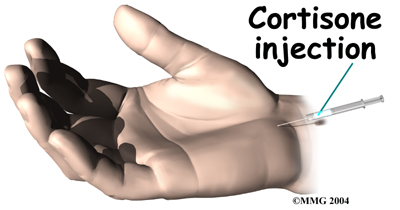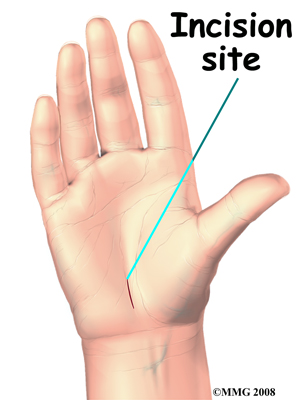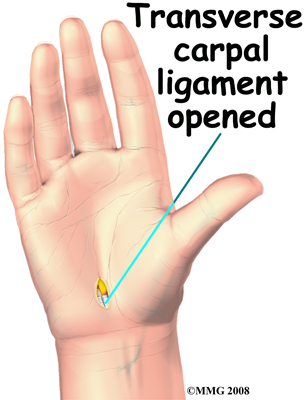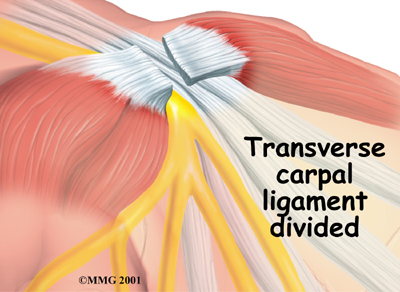Where is the carpal tunnel, and what does it do?
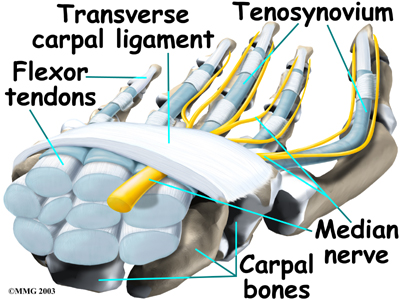
The carpal tunnel is an opening through the wrist to the hand that is formed by the bones of the wrist on one side and the transverse carpal ligament on the other. (Ligaments connect bones together.) This opening forms the carpal tunnel.
The median nerve passes through the carpal tunnel into the hand. It gives sensation to the thumb, index finger, long finger, and half of the ring finger. It also sends a nerve branch to control the thenar muscles of the thumb.
Median Nerve
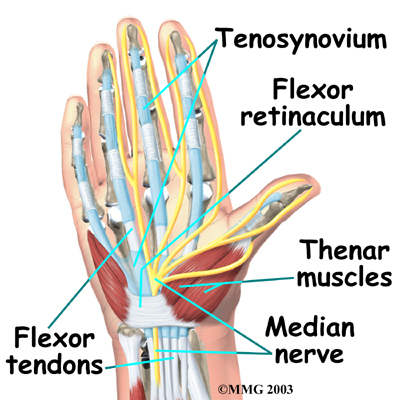
The thenar muscles help move the thumb and let you touch the pad of the thumb to the tips each of each finger on the same hand, a motion called opposition.
Opposition
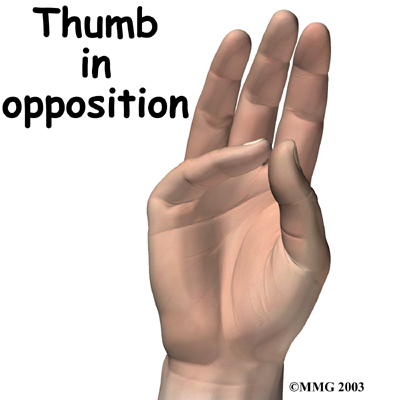
The median nerve and flexor tendons pass through the carpel tunnel. The median nerve rests on top of the tendons, just below the transverse carpal ligament. The flexor tendons are important because they allow movement of the fingers, thumb, and hand, such as when grasping. The tendons are covered by a material called tenosynovium. The tenosynovium is a slippery covering that allows the tendons to glide next to each other as they are worked.
Related Document: [url=article.php?aid=280]Skill Builders Guide to Hand Anatomy[/url]


![[圖]](http://ext.pimg.tw/hcm5499/f96fb638e67a67040ddd6969cd77b1f2.gif)
![[圖]](http://wwwu.tsgh.ndmctsgh.edu.tw/reh/images/hygiene/%E8%A1%9B%E6%95%99%E5%96%AE/%E8%82%A9%E9%A0%B8%E9%85%B8%E7%97%9B%E6%80%8E%E9%BA%BC%E8%BE%A6%201.jpg)
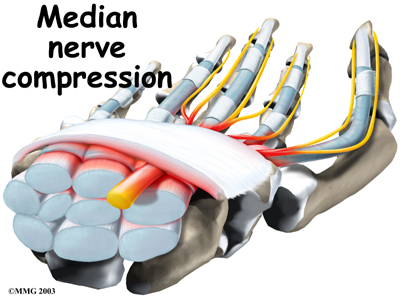
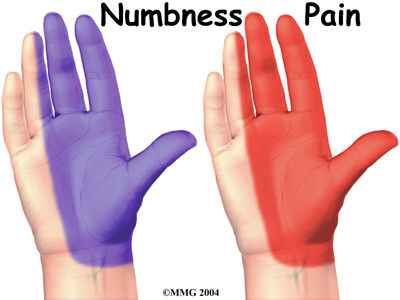
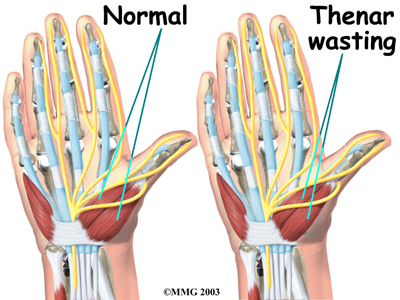
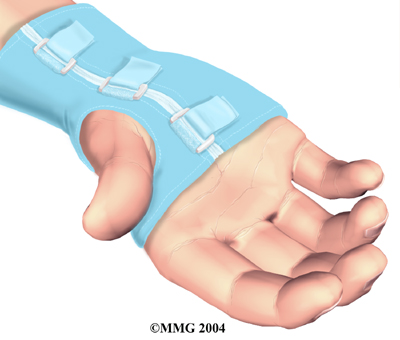 Our physiotherapist will often have you wear a
Our physiotherapist will often have you wear a  If your symptoms started after a traumatic wrist injury, your doctor may order X-rays to check for a fractured bone.
If your symptoms started after a traumatic wrist injury, your doctor may order X-rays to check for a fractured bone.